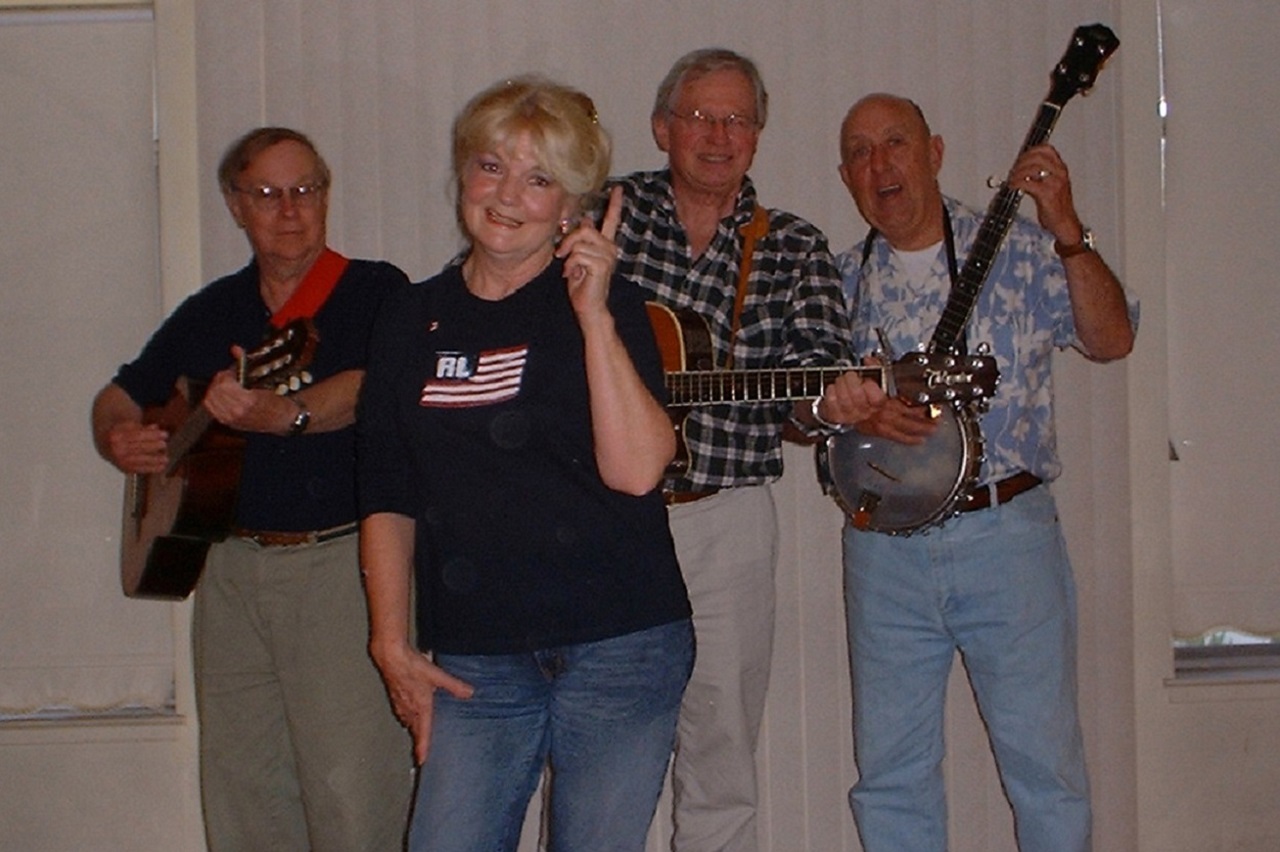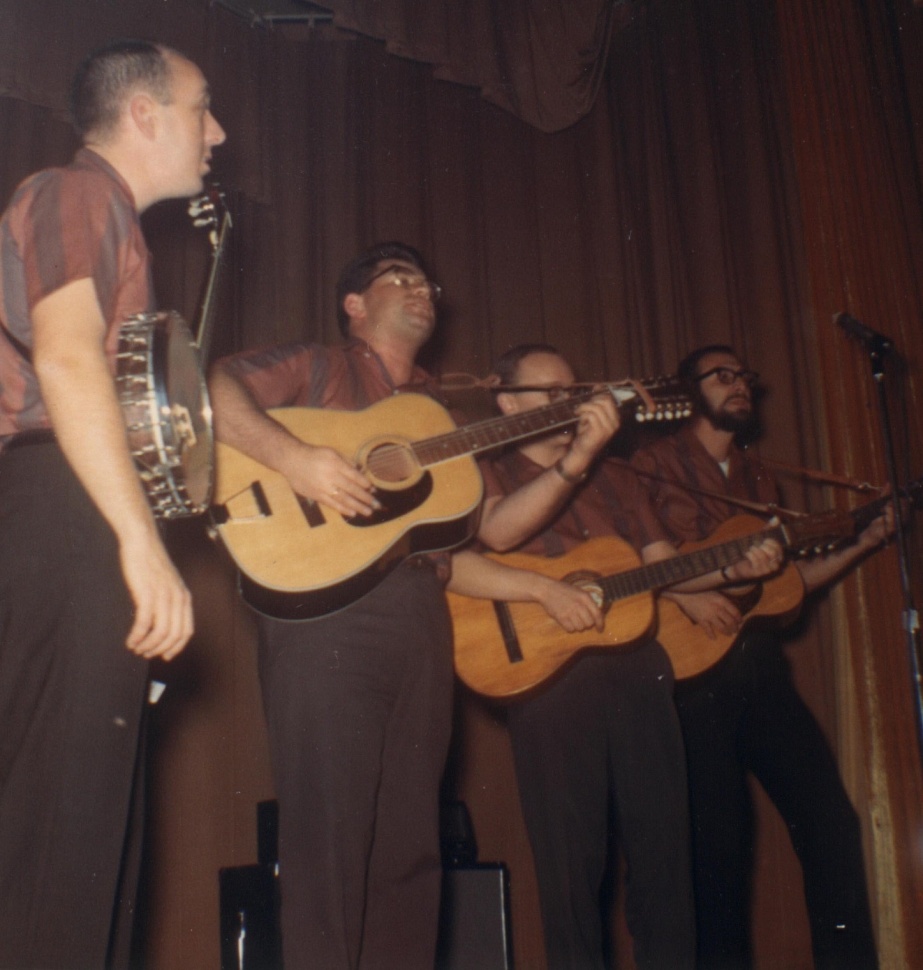Blowin' in the Wind
At the time that I was born, we were approaching the height of the American folk music revival. California's Kingston Trio had put out their first album the year before I was born, Peter, Paul, & Mary formed in New York City when I was a year old, and Bob Dylan put out his first album when I was two. I remember a lot of Peter, Paul and Mary being played when I was very young, and my dad would come home every evening from work and invariably pick up his guitar or banjo and start playing popular tunes. I recall when my parents went to see Peter, Paul & Mary at the Civic Auditorium in 1964. I guess they felt that a four-year-old was too young, so I stayed home with a babysitter.
Music has always played an important role in our family. Whether it be classical, rock, opera or jazz, we've learned to appreciate all of the genres. I spent many years playing a charango in an Andean group and even spent some time in our local San Jose Taiko Group (Japanese drums). I feel so fortunate to live in an area with such an interesting and diverse music scene.
Revival
The American folk music revival began in the 1940s, and included such artists as Burl Ives, "Lead Belly" Ledbetter, Woody Guthrie, and Pete Seeger. In 1940, Pete Seeger formed a quartet which included Woody Guthrie, though disbanded because of World War II. Pete Seeger later formed The Weavers in 1948. The revival was inclusive of a wide variety of American (and international) folk music including gospel, blues, Appalachian, bluegrass, sea shanties, and even Native American. Folk is considered "roots" music, as it served as a foundation for such genres as rock and roll, jazz, and rhythm and blues. The instruments used are primarily acoustic.
A Few of the Songs
One early and prominent figure in the revival was Woody Guthrie, who wrote This Land is Your Land in 1940. Goodnight, Irene was another early song of the revival, having been recorded by blues musician Huddie "Lead Belly" Ledbetter in 1933. It was popularized by The Weavers in 1950. The Bay Area's Kingston Trio published their first album in 1958 with the hit Tom Dooley. They later had a hit with Pete Seeger's Where Have All the Flowers Gone?. Peter, Paul & Mary formed in 1961 and had many hits including If I had a Hammer (Pete Seeger and Lee Hayes), Blowin' In the Wind and The Times They are a Changin' (both by Bob Dylan), and Leaving On a Jet Plane (John Denver). Many of the artists and songs of the American folk music revival have become associated with anti-war protest and the Civil rights movement. In addition to a few of the songs mentioned, We Shall Overcome has become a civil rights standard. It's an old gospel song whose current version was arranged by Zilphia Horton, Guy Carawan, Frank Hamilton, and Pete Seeger and is now in the public domain. Joan Baez performed the song at the March on Washington in August of 1963.
The Group
As a kid, my dad often invited friends and musicians over to the house on weekends for socializing and sing-a-longs. Sometime in the mid-1960s he joined a folk group simply referred to as The Group. I remember some of the practices and one of the performances. The performance took place in the parking lot of the Doggie Diner, which was located on the southwest corner of Winchester and Stevens Creek Boulevard (now Citti's Florist). There was a good sized crowd and the entertainment was composed of my dad's group and a rock group. I remember a friendly exchange between my dad and one of the members of the rock group, complimenting each other on their music and performance. My dad shared his memories of The Group during a 2004 reunion:
"The Group" as it was always referred to by us, first existed in the persons of Jim Williamson, Bill Holtkamp, and Richard Juengel. I remember when Jim Williamson invited me to join them saying, "...and bring your banjo." Bill Holtkamp actually played better "lead" banjo than I, but he gave me the chords and extra help. "The Ford Sisters" as Patti and Diane were called by us, became regulars after a flat-bed truck performance in Milpitas. Bobby Krezyn, a member of Jim Williamson's family, joined us later with youth, talent, and enthusiasm. The Group never got any bigger, and had no objective other than having fun and an occasional performance. Bill Holtkamp went on with a group known as The South Bay Wailing Company. Their work has been recorded and aired on Public Broadcasting, as well as live appearances.
The Group was together for a relatively short period of time, yet they created a repertoire of over thirty songs, and performed in such venues as hospitals, company picnics, amateur nights, and schools. Some forty years later, The Group gathered in San Jose for a reunion in May of 2004.
Further Reading from the California Room:
- San Jose Public Library Catalog: Folk Music
- The Sound of the Suburbs: A Case Study of Three Garage Bands in San Jose, California during the 1960s, SJSU ScholarWorks
- San Francisco, the Musical History Tour by Joel Selvin
- Bay Area Blues by Lee Hildebrand
- San Jose Public Library Catalog: Civil Rights Ref Cal (advanced search)







Add a comment to: Looking Back: A Local Folk Music Group in the 1960s